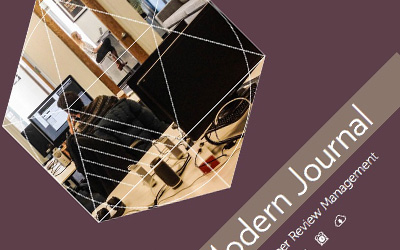
Law reviews are pivotal to advancing legal research and driving societal progress. So much of that depends on incorporating various perspectives into the publishing process. As gatekeepers of legal scholarship, law review editors bear the responsibility of promoting open and robust legal discourse.
In this blog post, we delve into actionable strategies that law review editors can employ to amplify marginalized voices, challenge biases, and ultimately foster a more diverse and inclusive legal landscape.
1. Craft a guiding diversity and inclusion statement
The foundation of any diversity and inclusion initiative is developing a set of principles or a diversity and inclusion statement. Your diversity and inclusion statement should communicate the values that inform your editorial decisions and serve as a guiding light for your editors, authors, and readers.
Primary areas to address include:
- Your commitment to diversity and inclusion: Explicitly state your publication’s dedication to representing diverse perspectives and voices and emphasize the importance of fostering an environment where all individuals, regardless of background, feel valued and included.
- Editorial Practices: Outline how you intend to integrate diversity and inclusion principles into your article selection process, publication decisions, and author communication.
- Accountability: Detail how you plan to monitor and report on progress toward your DEI goals (e.g., collecting optional demographic data).
2. Diversify your editorial board
Editorial diversity is a crucial component of fostering inclusivity in law review publications. A diverse board brings a spectrum of experiences, viewpoints, and insights to the decision-making process. Actively seek individuals from underrepresented backgrounds to join your editorial team, ensuring that multiple perspectives are taken into consideration when reviewing submissions. Further, seek diversity of thought, research interests, and methodologies to ensure that your board reflects a comprehensive range of perspectives.
3. Consider adopting an anonymized review process
Unconscious biases can inadvertently seep into the review process, affecting decisions about article selection and rejection. To mitigate this, consider implementing an anonymized article review process where editors do not have access to the authors’ identities or affiliations during the initial evaluation phase. This approach focuses the evaluation purely on the merits of the work, helping to promote fairness and objectivity.
Quick Tip: Did you know you can require anonymized submissions via Scholastica? Learn more in this blog post.
4. Broaden your outreach efforts
If your publication has historically lacked diversity in submissions, it’s time to expand your outreach efforts. Collaborate with your law school, legal organizations, and affinity groups that focus on underrepresented communities. Attend conferences and events that bring together diverse legal scholars. By actively seeking out diverse voices, you can broaden your pool of potential contributors.
5. Support emerging scholars
Creating an inclusive scholarly landscape means providing opportunities for emerging scholars from all walks of life to participate in your publication. Encourage submissions from early-career academics, law students, and practitioners who might have unique perspectives but lack the platform to share them.
To make this process more inclusive, consider implementing a mentorship program where experienced authors or editors can provide guidance and support to emerging voices. There may be legal writing profs at your school eager to help with this.
6. Promote intersectional perspectives
The intersections of identity — such as race, gender, sexuality, and class — shape multifaceted experiences and viewpoints. Encourage contributors to explore these intersections in their work. Highlighting intersectional analyses enriches the legal discourse by addressing the complex dynamics that underlie legal issues.
7. Offer editorial workshops
Promote a culture of continuous learning by offering editorial workshops and training sessions that address implicit biases, cultural sensitivity, and diversity-related topics. By raising awareness among your editorial team, you create a more inclusive environment that translates into editorial decisions.
8. Highlight diverse voices
Beyond publishing articles, use your platform to amplify diverse voices in various ways. Feature author interviews, guest editorials, or symposia dedicated to exploring topics related to diversity and inclusion. By providing a space for these discussions, you underscore your commitment to diversity and inclusion.
9. Monitor and evaluate progress
Regularly assess the impact of your diversity and inclusion initiatives. Collect and analyze data on submissions, acceptances, and rejections to identify trends and areas for improvement. By quantifying your progress, you can adjust strategies and tactics to further enhance your efforts.
Quick Tip: Did you know you can request optional demographic information with Scholastica submissions? Learn more in this help doc.
10. Create a welcoming environment
An inclusive environment is built on respect and understanding. Implement guidelines for respectful and constructive feedback, both during the article selection process and in interactions with authors. Ensure that your publication stands as a safe space where diverse viewpoints are valued and respected.
Putting it all together
Law review editors possess a unique opportunity to influence the direction of legal research. By prioritizing diversity and inclusion in all aspects of their publication development process editors can drive transformative change in the legal scholarship landscape and beyond.








